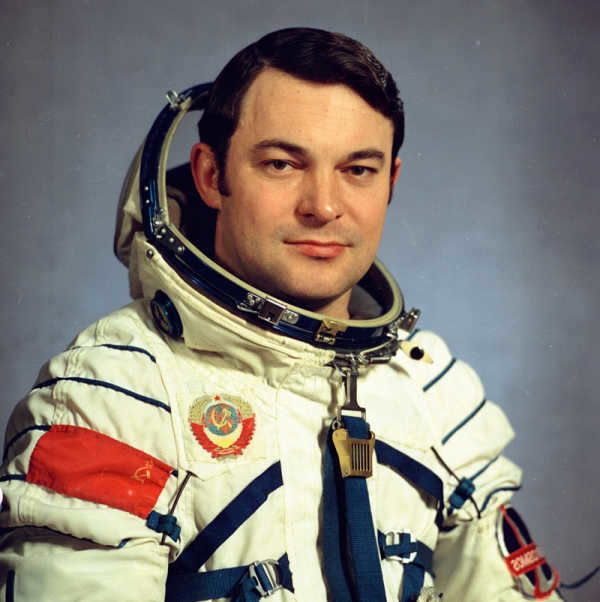
The future Soviet cosmonaut Yuri Viktorovich Romanenko was born on August 1, 1944 in the village of Koltubanovsky, located in the RSFSR’s Orenburg region. After completing his secondary education in Kaliningrad in 1961, he worked as a concrete worker at a factory in the same city for two months before becoming a mechanic in a military unit from November 1961 to June 1962. Yuri Romanenko successfully gained admission to the Chernigov Aviation School (VVAUL) and graduated in 1966. Following his higher education, Romanenko began his service as a pilot-instructor.
Training for Space Exploration
Yuri Viktorovich was admitted to the group of cosmonauts at the Cosmonaut Training Center on April 27, 1970. In 1971, he became a father to Roman Romanenko, who would go on to become a second-generation cosmonaut. From 1970 to 1972, Yuri Romanenko underwent comprehensive space training. Additionally, in 1972, Yuri Viktorovich took part in the Spiral program as a member of a cosmonaut team. The program aimed to launch an orbital spaceplane, but it was ultimately cancelled, leading to the disbandment of the team. From 1972 to 1973, Yuri Romanenko prepared for the EPAS program, which involved an experimental flight of the Apollo-Soyuz spacecraft. He later became a member of the 2nd backup crew and remained in that role until the start of the mission. For the following two years, cosmonaut Romanenko prepared for space expeditions aboard the Salyut-6 OS.
On December 10th, 1977, the Soyuz-26 spacecraft, carrying commander Yuri Romanenko and flight engineer Georgy Grechko, embarked on the first expedition to Salyut-6, entering Earth’s orbit. After a successful docking to the aft part of the orbital station, the crew transferred onboard and remained there for the next three months. Due to a failed docking attempt by the Soyuz-25 spacecraft, the previous space mission had to be aborted, leading engineers to suspect a malfunction in the Salyut-6 forward docking unit. As a result, the crew of Soyuz-26 had to perform a spacewalk lasting an hour and a half to inspect the docking unit. Fortunately, the inspection revealed that the unit was in proper working order.
On March 16th, 1978, the crew safely landed in the descent vehicle near Tselinograd, which is now known as Astana.
The next flight
Resources about the subject
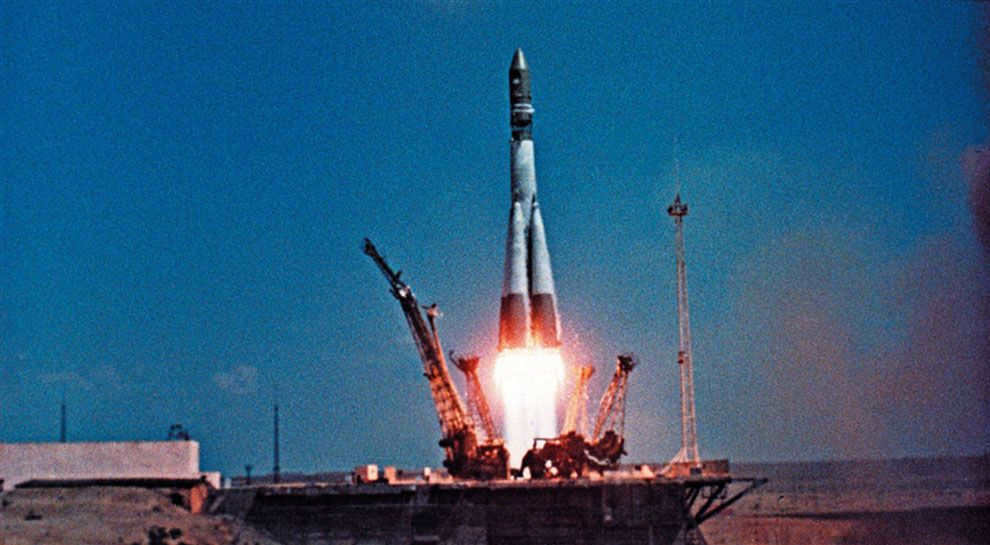
The second space mission of cosmonaut Romanenko commenced on September 18, 1980, but was of short duration, lasting only one week. Joining him on the Salyut-6 mission for the first time was Cuban cosmonaut Arnaldo Tamayo Mendez. On September 26, 1980, the group of cosmonauts safely returned to Earth.
Prior to the initiation of cosmonaut Romanenko’s third space mission in 1981, he completed his studies remotely at the Air Force Academy in Monino settlement, Moscow region.
Third space mission
The third and final space mission of Yuri Romanenko occurred on February 5, 1987. The leader of the second expedition to the Mir station, along with the flight engineer A. Loveikin, launched into orbit on the Soyuz TM-2 spacecraft. During their time on the orbital complex, a module called “Quantum” was launched. Its purpose was to carry out various astrophysical measurements and biological research. On April 5, after completing their assigned tasks, the “Quantum” module began to approach the station. However, the system suddenly lost contact, and the astronauts were able to witness the module flying just 10 meters away from the Mir station.
On April 9, a decision was made to attempt a second docking of the “Kvant” module with the Mir station, even though the module had already moved 400 km away. The module was able to dock with the station, but it was not fully complete. As a result, cosmonauts Romanenko and Loveikin had to perform a spacewalk on April 11 to carry out technical tasks. The reason for the malfunction was a foreign object that remained lodged between the spacecraft. However, the cosmonauts were able to fix the issue in zero gravity, spending a total of 3 hours and 40 minutes. Additionally, cosmonaut Romanenko performed two more spacewalks lasting 2 hours and 3 hours and 15 minutes, respectively.
During this mission, Yuri Viktorovich stayed on the station for more than 325 days. He successfully returned to Earth on December 29, 1987.
In 1988, the Hero of the USSR twice over was released from active duty in the cosmonaut corps due to the appointment of Yuri Romanenko as the head of the third division at the CPC. He held this position until 1995 when he was officially retired on October 2 due to reaching the age limit. Following his retirement, he found employment at the construction company CJSC “Stiltex”.
It is worth noting that Yuri Viktorovich was acknowledged as a seasoned astronaut, having spent over 430 days in space over the course of three missions.
I was raised in Star City, where all the grown-up neighbors had some connection to space, whether as instructors, employees of the Cosmonaut Training Center (Gagarin Cosmonaut Training Center – TASS note), or cosmonauts themselves. It seemed to me back then that being a cosmonaut was the most common profession on Earth.
One of my most vivid childhood memories revolves around my father, Yuri Romanenko, preparing for his inaugural spaceflight in 1977. It was a momentous year for our family, with my father’s first mission coinciding with the birth of my younger brother. I was just six years old at the time, but I recall every detail with clarity. However, the news of my father’s journey into space came as a surprise to both my mother and me. In those days, rocket launches were kept secret until the last minute. All we knew was that he was part of the backup crew.
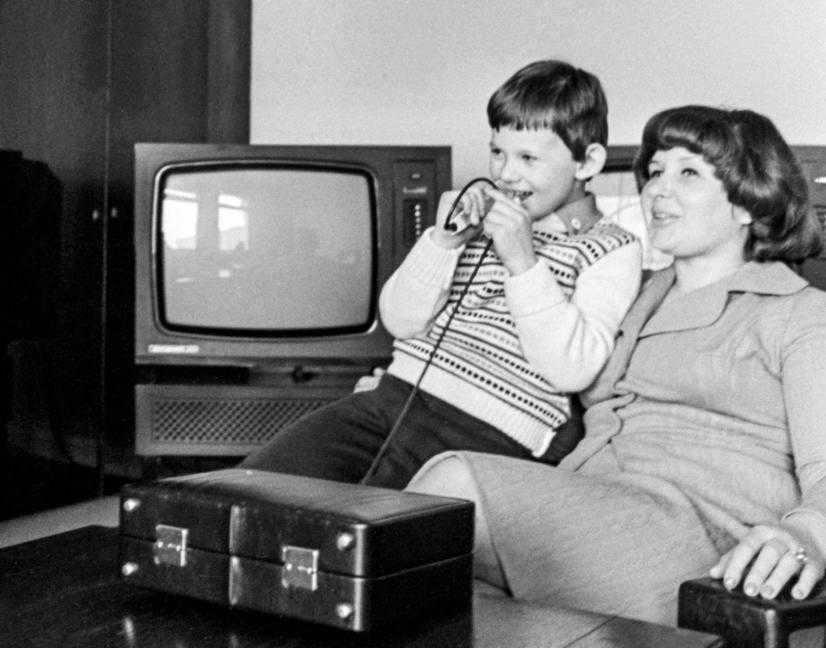
During a communication session of the orbital crew Yuri Romanenko and Georgy Grechko, Roman and Alevtina Romanenko were present in the Mission Control Center on February 4, 1978.
Subsequently, a significant event occurred that remains etched in the memory of every cosmonaut throughout their training – one of the cosmonauts from the main crew was deemed unfit to fly, leading to the replacement of the entire crew by their backups. Thus, my father embarked on his inaugural expedition lasting 96 days.
Reference
Yuri Romanenko joined the Yuri Gagarin Cosmonaut Training Center (CTC) on April 27, 1970, as a trainee cosmonaut in the fifth set of the Air Force. After successfully completing a comprehensive space training course, he was officially designated as a cosmonaut on July 6, 1972.
Following his appointment, Romanenko served as an instructor-cosmonaut from 1979 to 1982, and then as an instructor-cosmonaut-test pilot from 1982 to 1988. He became a member of the International Space Programs Group in 1976 and went on to lead the group from 1982 to 1986. Additionally, from June 1986 to October 1988, he held the position of Deputy Commander of the Cosmonaut Squadron at the CPC. In 1987, Romanenko achieved the rank of Cosmonaut First Class.
He underwent training in 1972 as part of the Spiral program, a Soviet initiative aimed at developing an air-orbital aircraft. From 1972 to 1975, he served as a reserve crew commander under the EPAS program, a joint venture between the Soviet Union and the United States to conduct a joint flight of Soyuz and Apollo manned spacecraft.
Yuri Romanenko’s first space mission took place from December 10, 1977, to March 16, 1978. He served as the commander of the Soyuz-26 spacecraft and led the first main expedition to the Salyut-6 orbital station. During his time at the station, he worked alongside Georgy Grechko and Vladimir Remek, the first cosmonaut from Czechoslovakia who was a member of the visiting expedition. Romanenko and Grechko were responsible for overseeing the successful automatic docking of the first Soviet cargo ship, Progress-1.
During his third flight, which took place from February 5 to December 29, 1987, Yuri Romanenko served as the commander of the Soyuz TM-2 spacecraft and was a key member of the second main expedition to the Mir station. He worked alongside Alexander Loveikin, Alexander Alexandrov, and Mohammed Faris, the first Syrian cosmonaut (who was a part of the visiting expedition). Throughout this mission, Romanenko successfully completed three spacewalks. In April, he and Loveikin ventured into space to remove a foreign object from the docking unit of the Kvant station module.
Throughout his career, Yuri Romanenko accumulated an impressive total of 430 days in space across three separate flights. During these missions, he spent a total of 18 hours and 21 minutes outside the spacecraft, accomplishing four spacewalks.
On October 11, 1988, Romanenko was dismissed from the cosmonaut squadron due to his appointment as the Head of the 3rd Directorate of the CPC. He held this position until October 1995 and subsequently retired from the Armed Forces with the rank of colonel.
Among the various genres of literature, science fiction captivated my interest the most. I particularly enjoyed reading the works of Alexander Belyaev, a visionary author who foresaw and described numerous groundbreaking inventions in his novels. Interestingly, during his lifetime, many of his ideas were dismissed as unrealistic. However, in our modern era, advancements such as underwater photography, television, space exploration, and moon flights are no longer considered extraordinary. Belyaev’s writings serve as a testament to his ability to imagine and predict these innovations long before their actual development.
Regrettably, my father was frequently absent from our residence, thus he was unable to look after us. However, when he underwent training in Star City, he devoted attention to our upbringing. Our weekends were devoid of any leisure time. We would awaken at six o’clock in the morning to engage in physical exercise. We would hastily consume breakfast, all while inside the car. Our white “Volga” (back then, all cosmonauts solely possessed white or black “Volga” vehicles) would be packed the night before for our journey to the river. And once we arrived, we would partake in fishing and underwater hunting.
My friends and I used to have our very own music band, but we faced a challenge when it came to finding a suitable location for rehearsals. We resorted to sneaking into school premises after hours and passionately belting out tunes by legendary bands such as the Beatles, the Time Machine, Resurrection, and Kuzmin. Unfortunately, our audacious behavior attracted the attention of strict teachers and concerned parents who would scold us and even give us poor grades in behavior. In moments of desperation, we were left with no choice but to relocate to building entrances and carry on with our music sessions there.
My father once accompanied me on a visit to the Cosmonaut Training Center, where we had the opportunity to explore the medical department. This department is equipped with various cutting-edge devices such as a centrifuge and barocamera, which are instrumental in assessing an individual’s suitability for space travel and their ability to adapt to weightlessness. The doctors placed me in a specially designed chair and subjected me to controlled spinning at a specific speed, closely observing my physical response. To their delight, I emerged from the experience with a smile on my face. After a few minutes had passed, they inquired about my well-being, to which I responded positively. They proceeded to measure my pulse and blood pressure, both of which were within the normal range. It was at this point that the doctor turned to my father and remarked, “Yuri Viktorovich, your son bears a striking resemblance to you. It is highly likely that he will excel if he chooses to pursue a career as an astronaut”. However, my decision to pursue this path came much later in life.
My Initial Passion for Aviation
From an early age, I had a strong fascination with airplanes. I was deeply involved in the world of airplane modeling and even joined a club at school to further fuel my passion. I eagerly attended classes, meticulously crafting corded models with the help of a jigsaw, and carefully covering them with specialized papyrus paper. The most thrilling part was launching these creations into the sky, as it brought me immense joy and excitement.
My love for the sky ultimately influenced my career choice. After completing the eighth grade, I enrolled in the prestigious Leningrad Suvorov School, followed by the Chernigov Higher Military School of Pilots. This institution had a remarkable history, having produced numerous astronauts, including my father. It was a challenging yet pivotal period in my life. Throughout my studies, I learned the importance of discipline, obedience, overcoming personal weaknesses, and functioning effectively as part of a team. These formative years have greatly shaped my character and have proven invaluable for my future endeavors.
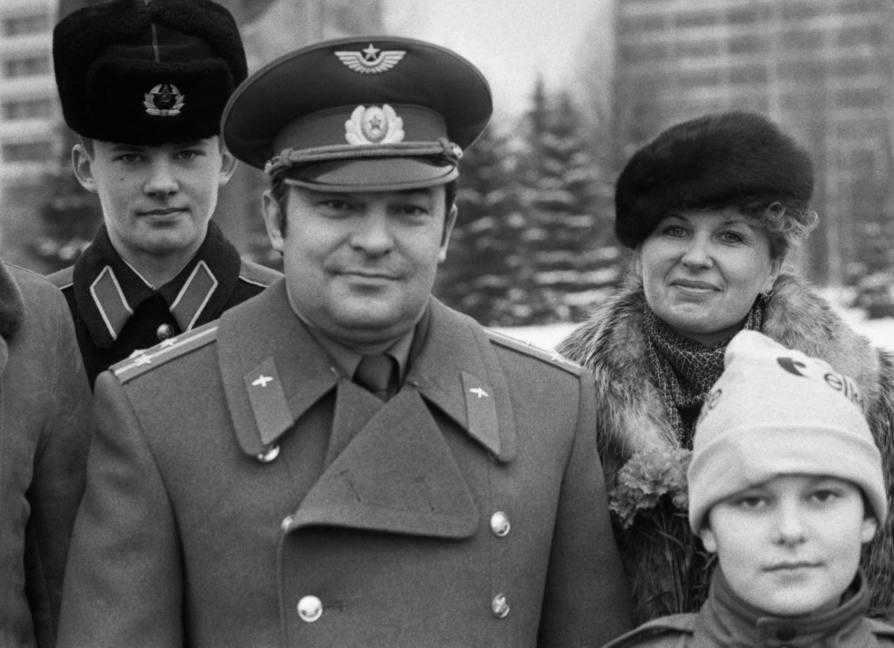
The Romanenko family, consisting of cosmonaut Yuri, his wife Alevtina, and their two sons Roman and Artem, can be seen in Star City on January 12, 1988.
During the challenging period of the 1990s, Yuri Romanenko served in the special purpose regiment, specializing in cosmonaut training. The 90s were a time of great difficulties, with devastation all around and a shortage of kerosene for flights. The state showed little interest in aviation. In the midst of this, a friend suggested that I join the cosmonaut squadron. I underwent an interview course, psychological selection, and various medical examinations that lasted for six months. The thorough evaluation process resulted in only 11 out of 170 candidates being selected. When my father learned about my decision, he acknowledged the complexity of the job but also recognized that it was my own choice and not something he had forced upon me.
Dream Team
Within the cosmonaut team, I experienced equal treatment. There was no special treatment given to anyone. The primary focus for a cosmonaut is maintaining good health, acquiring knowledge, and honing skills. In a critical situation, no favoritism will come to your aid. If anything, I was held to higher standards and faced more stringent expectations. It is often said that the child of a cosmonaut cannot fail. However, like everyone else, I had to take exams, meet certain requirements, and train alongside my peers. Many people have the misconception that space is all about romance, but the reality is that it involves demanding work. Even the wait for a spaceflight is psychologically challenging. After all, no one can guarantee that you will definitely fly!
It took me nearly a decade to attend my first space launch, even though I was originally scheduled to go back in 2003 on the American shuttle. However, just a few months before the launch, the shuttle exploded during re-entry into the Earth’s atmosphere.
It’s worth noting that at that time, the American spacecraft experienced a crash upon its return to Earth. Due to safety concerns, the Russian side decided not to take part in the Space Shuttle program, which was ultimately terminated in 2010. As a result, my first flight was delayed for an additional six years.
When I stepped onto the Russian Soyuz spacecraft, I was filled with joy. It was hard to believe that my long-held dream was finally being realized. And I can vividly recall those initial sensations. As I settled into my sleeping quarters and closed my eyes, a surge of excitement washed over me – it was like having stars dancing in my eyes. This phenomenon, known as the space effect, occurs due to the absence of atmosphere and the weightlessness experienced in space, as well as the presence of heavy metal particles that permeate the environment. It feels like flashes of light, reminiscent of a camera’s flash. Initially, it was a noticeable experience, but over time, I grew accustomed to it. Nevertheless, the thrill and euphoria of being in space persisted throughout the entire duration of the flight.
On both occasions, I had the good fortune of being surrounded by a skilled and reliable crew, although the memories of the first one have stayed with me more vividly. It was during that mission that everything seemed to fall into place effortlessly. My esteemed colleagues, Frank De Winne from Belgium and Robert Thirsk from Canada, played an integral role in our success. Throughout the six-month duration of our journey, we conducted a plethora of diverse experiments – spanning from the realms of biology and medicine to the study of the behavior of metals and other substances in a weightless environment. Remarkably, every task was executed flawlessly, adhering to the intended plan without any deviations. Perhaps what stands out most in my recollection of the experience is the serene and harmonious atmosphere that enveloped our team throughout the entirety of the mission.
Brief biography:
Cosmonaut of the USSR: №42;
Cosmonaut of the world: №85;
Number of flights: 3;
Duration: 430 days 18 hours 21 minutes 30 seconds;
Number of spacewalks: 4;
Yuri Romanenko – the 42nd cosmonaut from the USSR, who also holds the title of the 85th cosmonaut in the world. He has had the privilege of going on three space flights, spending a total of 430 days, 18 hours, 21 minutes, and 30 seconds in space. During his career, Romanenko has performed four spacewalks. His contributions to the field of space exploration are remarkable.
Yuri Romanenko is an exceptional individual who has made significant contributions to the field of space exploration. He is known for his impressive career as the 42nd cosmonaut of the USSR and the 85th cosmonaut in the world. Romanenko’s achievements include three successful space flights, totaling 430 days, 18 hours, 21 minutes, and 30 seconds in space. In addition, he has completed four spacewalks, further demonstrating his expertise and dedication to advancing our understanding of the cosmos.
Yuri Romanenko is widely recognized as an outstanding pilot-cosmonaut of the USSR. His remarkable achievements have earned him the prestigious title of Hero of the Soviet Union, not once, but twice. His contributions to the field of space exploration have left an indelible mark on history.
He was born in the village of Koltubanovsky, Buzuluk district, Orenburg region, on August 1, 1944. His father, Romanenko Victor Vasilyevich, was a military sailor born in 1916, and his mother, Romanenko (Vasina) Larisa Grigoryevna Romanenko, was a military doctor born in 1917. When Yuri Viktorovich was 10 years old, his sister, Romanenko Olga Viktorovna, was born into the family.
Romanenko Yu.V. attended secondary school № 23 in Kaliningrad and successfully graduated in 1961. He then enrolled in the Chernigov Higher Military Aviation School of Pilots (VVAUL) to study “Combat application and operation of aircraft,” and completed his studies in 1966.
In April 1970, he became a cosmonaut trainee in the Air Force CPC after being assigned by Order No. 505 from the Air Force Commander-in-Chief (Air Force). Following his assignment, he underwent over 2 years of general space training. In July 1972, he was selected as a cosmonaut for the 1st Department of the 1st Directorate. As part of a group of cosmonauts, he underwent training for the Apollo-Soyuz Experimental Flight program, which involved a joint experimental flight between American and Soviet Apollo and Soyuz spacecraft.
From 1975 to 1977, he spent 2 years preparing for the first main expedition on the “Salyut-6” orbital station as a commander of the second crew, alongside cosmonaut Alexander Ivanchenkov. By October 1977, he was the backup commander for the Soyuz-29 spacecraft. In the same year, he trained for three months with cosmonaut Georgy Grechko as the commander of the first crew for the EO-1 program on the “Salyut-6” orbital station.
First flight
Yuri Romanenko’s first flight, with the call sign “Taimyr-1,” began on December 10, 1977, and lasted over 96 days. He served as the commander of the EO-1 main expedition, with Georgy Grechko as his partner.
Second flight
The second mission (which took place from September 18 to 26, 1980) lasted approximately 8 days. During this mission, Yuri Romanenko (using the call sign “Taimyr-1”) served as the commander of the Soyuz-38 spacecraft and led the joint Soviet-Cuban expedition (EP-9), alongside Arnaldo Tamayo Mendez.
Third mission
The third and longest mission (lasting over 326 days) began on February 5, 1987. During this mission, Yuri Viktorovich (with the call sign “Taimyr-1”) served as the commander of the main expedition on the Mir orbital complex, initially paired with Alexander Loveikin and later with Alexander Alexandrov. During his extended stay on board the spacecraft, Romanenko Yu started writing songs and performing them on the guitar.
In October 1988, he was removed from the cosmonaut corps due to his transition to a managerial position.
Personal life
Marital status: Alevtina Ivanovna Romanenko (nee Frolova) is married to Romanenko. They have two sons, Roman Yurievich Romanenko (born 09.08.1971) and Artyom Yurievich Romanenko (born 17.05.1977). Following in his father’s footsteps, Roman became a cosmonaut.
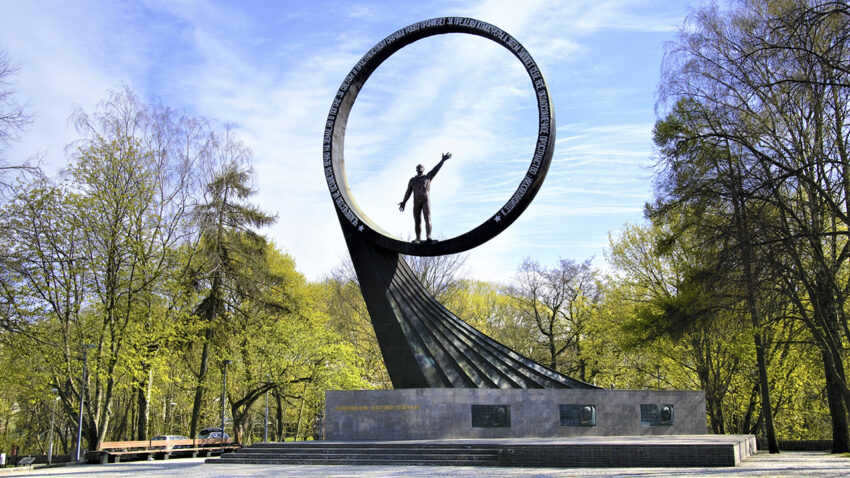
In 1980, the renowned Soviet artist Yedunov unveiled a sculpture in Kaliningrad commemorating the achievements of the individuals who explored the nearby cosmos. The monument pays tribute to the Kaliningrad-born cosmonauts Alexei Leonov, Yuri Romanenko, and Viktor Patsayev, ensuring their memory lives on for eternity.
Who are those cosmonauts from Kaliningrad? The biographies of these astronauts have some kind of connection with Kaliningrad. This monument is also known as the memorial sign “To fellow countrymen – cosmonauts”. Let’s pay tribute to our fellow countrymen, whose destiny will always be intertwined with our city and region.
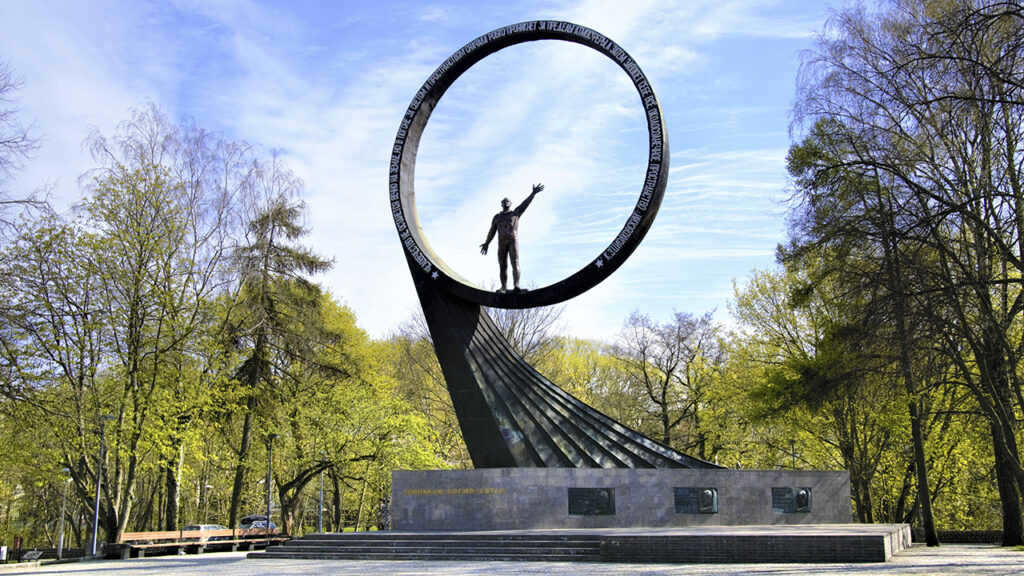
Alexei Arkhipovich Leonov (1934-2019)
Alexei Arkhipovich Leonov, a renowned Russian astronaut, passed away in 2019. He was born in 1934 and made significant contributions to space exploration during his lifetime. Leonov was the first person to conduct a spacewalk, a milestone achievement in human spaceflight. His bravery and pioneering spirit will always be remembered in the annals of space history.
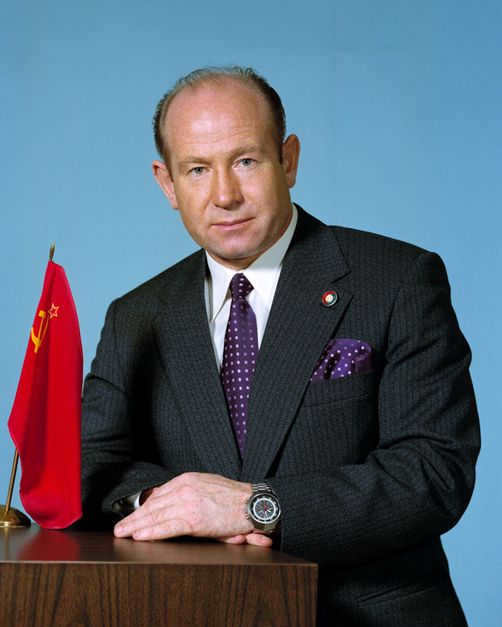
Cosmonaut Leonov was born on May 30, 1934 in the Kemerovo region. After the war in 1947, he and his parents relocated to Kaliningrad. In 1953, Alexei Arkhipovich completed his studies at secondary school No. 21, which is currently situated on Basseinaya Street.
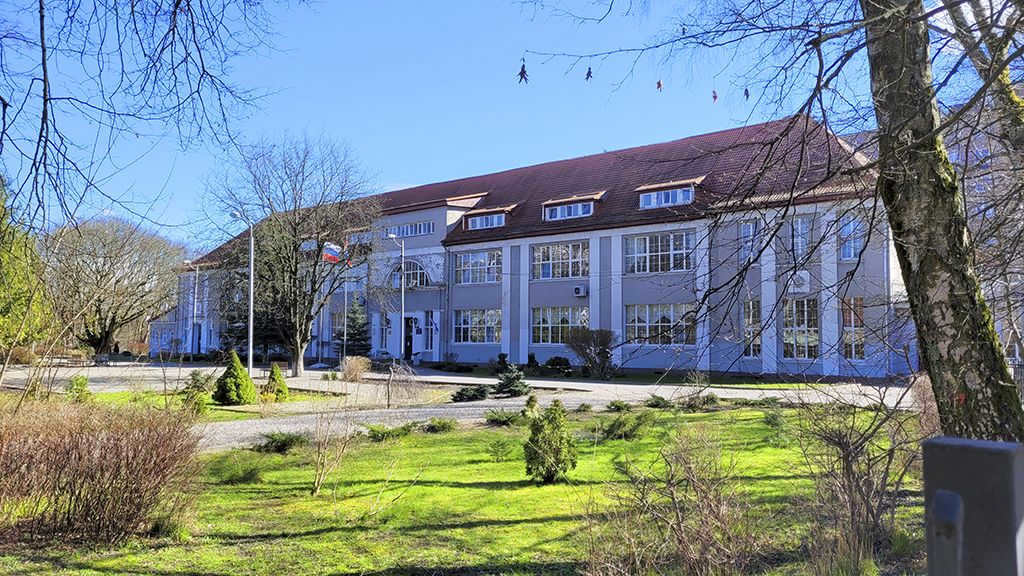
Alexei Arkhipovich Leonov holds the distinction of being the inaugural astronaut to venture into the cosmos. He is a recipient of the prestigious Hero of the Soviet Union honor on two occasions.
Yury Romanenko was born in the Orenburg region on August 1, 1944. He completed his education at Kaliningrad’s No. 23 secondary school in 1961. In 1984, the school opened the Romanenko Museum of Cosmonautics.
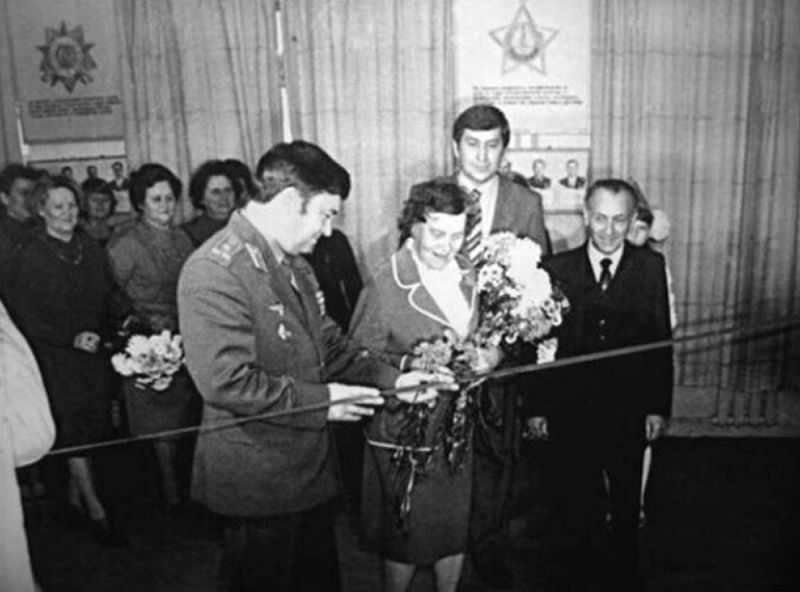
Yuri Viktorovich Romanenko has completed three missions to space and was honored with the prestigious title of Hero of the Soviet Union.
Viktor Patsayev (1933-1971)
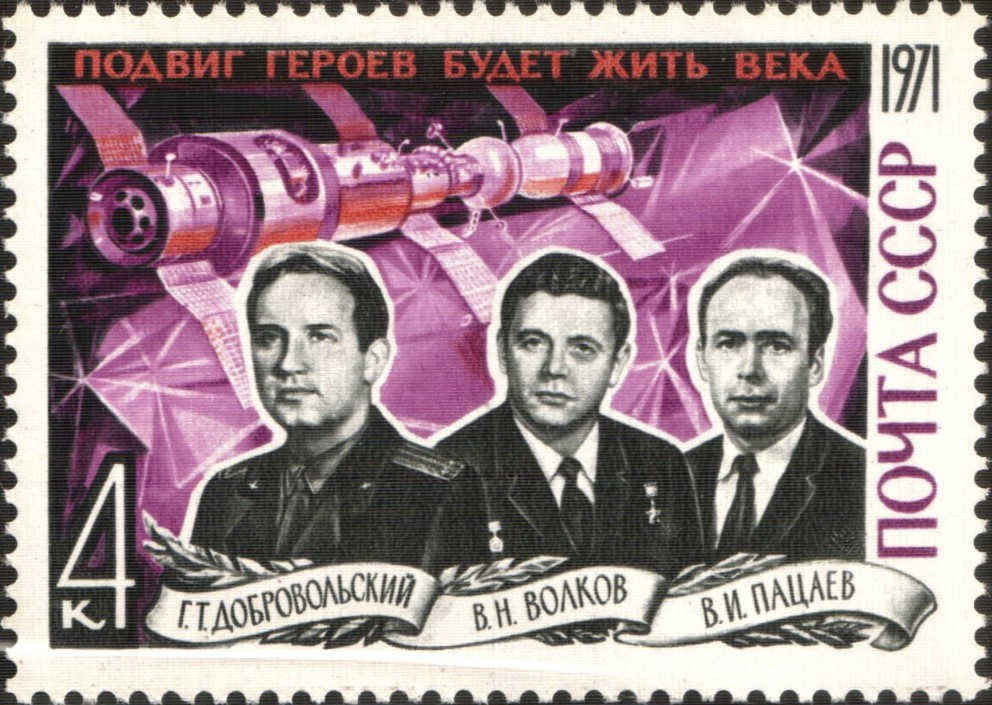
The tragic story of Viktor Ivanovich Patsayev unfolds with great sadness. His birth took place on June 19, 1933 in Aktobe, Kazakhstan. However, in 1948, when he was only 15 years old, Viktor and his family relocated to Nesterov in the Kaliningrad region.
In 1971, a devastating event occurred during the landing process when the descent vehicle experienced depressurization. As a result, Viktor Ivanovich, along with his fellow crew members, Volkov and Dobrovolsky, tragically lost their lives.
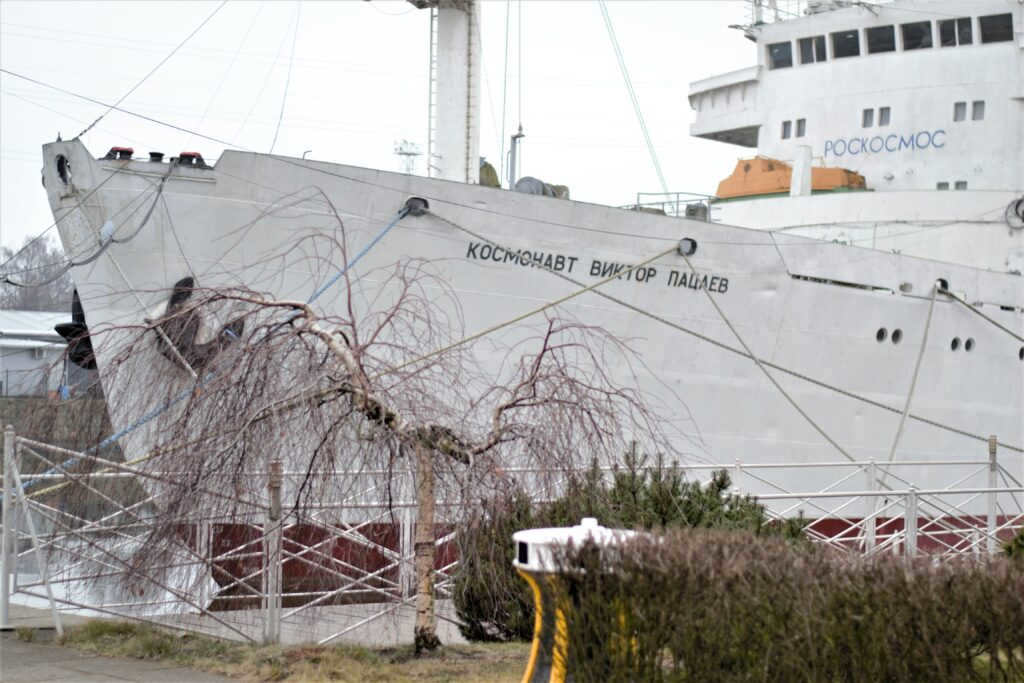
In Kaliningrad, at the berth of the Museum of the World Ocean, there is a unique museum ship called the “Cosmonaut Viktor Patsayev”.
Remembrance
Kaliningrad pays tribute to and cherishes its fellow countrymen who have ventured into space. Alexei Arkhipovich Leonov, in particular, frequently returned to his hometown for visits.
Now you have become acquainted with the Kaliningrad-born cosmonauts! This, of course, is only a brief overview of their stories. I will make an effort to include additional information in this article. I look forward to your comments!
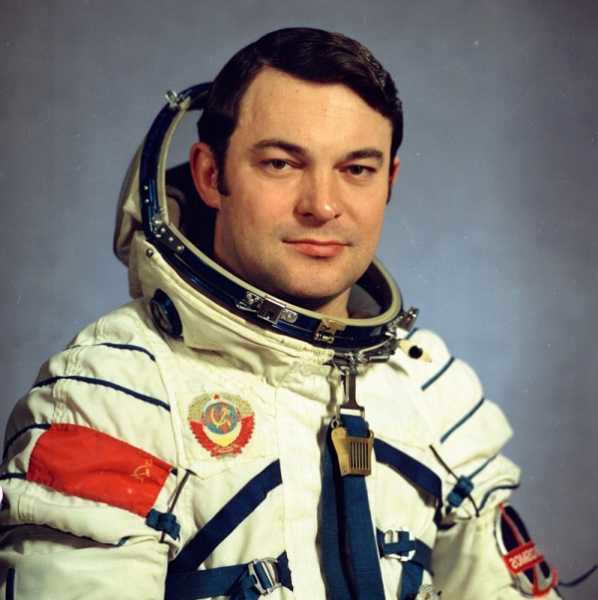
The future Soviet cosmonaut Yuri Viktorovich Romanenko was born on August 1, 1944 in the village of Koltubanovsky, located in the Orenburg region of the RSFSR. After completing his secondary education in Kaliningrad in 1961, Romanenko briefly worked as a concrete worker at a factory in the same city for two months. From November 1961 to June 1962, he served as a mechanic in a military unit in Kaliningrad. Romanenko then successfully entered the aviation school (VVAUL) in Chernigov, where he graduated in 1966. After completing his higher education, he began serving as a pilot-instructor.
Training for Space Exploration
Yuri Viktorovich was accepted into the group of cosmonauts at the Cosmonaut Training Center on April 27, 1970. In 1971, he became a father to Roman Romanenko, who would follow in his footsteps as a second-generation cosmonaut. From 1970 to 1972, Yuri Romanenko underwent comprehensive space training. Additionally, in 1972, he took part in the “Spiral” program and joined a team of fellow cosmonauts. The aim of the initiative was to launch an orbital spaceplane; however, the project was ultimately discontinued, and the team disbanded. Between 1972 and 1973, Yuri underwent preparations for the EPAS program, which involved experimental flights of the Apollo-Soyuz spacecraft. Subsequently, he became a member of the second backup crew, a role he held until the start of the mission. Over the next two years, cosmonaut Romanenko focused on training for space expeditions aboard the Salyut-6 OS.
On December 10, 1977, the Soyuz-26 spacecraft, commanded by Yuri Romanenko and with flight engineer Georgy Grechko, embarked on the first expedition to Salyut-6 and entered Earth’s orbit. After a successful docking to the aft part of the orbital station, the crew transferred aboard and remained there for the following three months. Due to issues encountered during the docking of the Soyuz-25 spacecraft to the orbital complex, leading to the cancellation of the previous space mission, engineers suspected malfunctions in the Salyut-6 forward docking unit. As a result, the Soyuz-26 crew had to conduct a one-and-a-half-hour spacewalk to inspect the docking assembly, which turned out to be in working order.
On March 16, 1978, the crew safely landed the descent vehicle near Tselinograd (now known as Astana).
The next flight
Resources about the subject
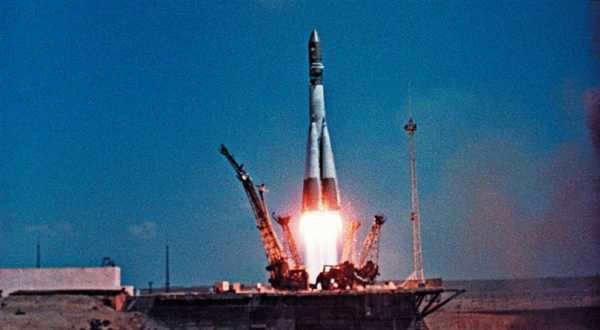
Gagarin’s journey to space
Cosmonaut Romanenko’s second space mission commenced on September 18, 1980, yet it only lasted for a week. For the first time, a Cuban cosmonaut named Arnaldo Tamayo Mendez also participated in the Salyut-6 mission. On September 26th, 1980, the team of cosmonauts successfully returned back to Earth.
Prior to cosmonaut Romanenko’s third space mission, he completed his studies at the Air Force Academy in absentia in 1981, situated in the Monino settlement of the Moscow region.
Yuri Romanenko’s Third Space Flight
Yuri Romanenko embarked on his third and final space flight on February 5, 1987. Accompanied by flight engineer A. Laveikin, the commander of the second expedition to the Mir station launched into orbit aboard the Soyuz TM-2 spacecraft. During their time on the orbital complex, they witnessed the launch of the “Quantum” module, which was tasked with conducting astrophysical measurements and biological research. On April 5, after successfully completing its mission, the “Quantum” module began its approach towards the station. However, the system suddenly lost contact, leaving the cosmonauts to observe as the module flew within 10 meters of the Mir station.
This time, Yuri Viktorovich spent over 325 days on the space station. On December 29, 1987, he successfully returned to Earth.
Further endeavors
In 1988, the two-time Hero of the USSR was relieved from his duties as a cosmonaut due to Yuri Romanenko’s appointment as the head of the third department at the CPC. He held this position until 1995, when he was dismissed on October 2 due to reaching the age limit. Following that, he worked at the construction company CJSC “Stiltex”.
It is worth noting that Yuri Viktorovich was recognized as the most experienced cosmonaut, having spent over 430 days in space during his three flights.





